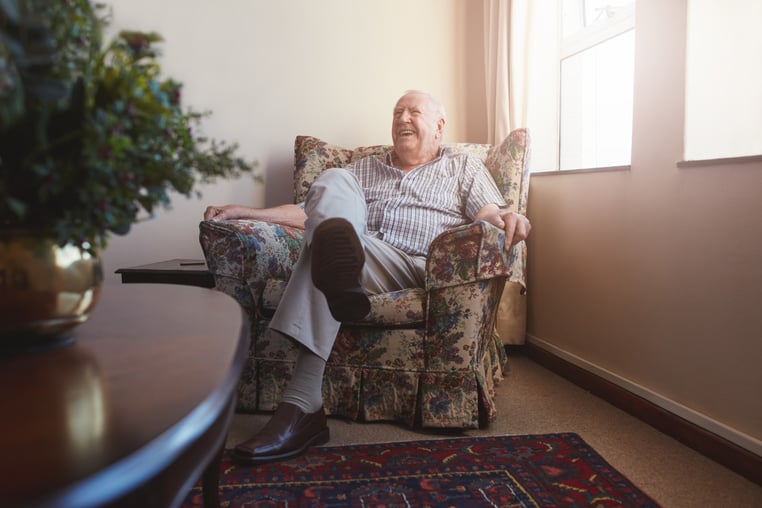
Creating a safe home environment for loved ones with memory loss can seem like a daunting task for caregivers. However, making your home safe is a top priority — especially right now, when you may be sheltering-in-place because of COVID-19 with a parent or other senior who has Alzheimer’s disease or dementia.
Seniors with memory loss can have a difficult time orienting to their surroundings, and they might misinterpret objects and situations around them. Now that many people are home for longer periods of time, it’s a good idea to evaluate your home and make sure it’s a safe and comfortable environment for your aging loved one. Use this checklist to keep you on track.
Tips for Making Your Home Safer for Someone With Alzheimer's or Dementia
1. Search for Trip Hazards
Many people with Alzheimer’s disease and dementia lose some of their fine motor control, which in turn means they often shuffle their feet. Because of this, they are more likely to trip on items on the floor.
Walk through your home and notice any trip hazards you see, and then remove as many as possible. This includes area rugs, wires or cords, footstools, or even papers and toys that might be lying around. The more you can pick up now, the safer your loved one will be.
2. Look at Your Home Through Your Loved One’s Eyes
Dementia can impact a variety of faculties including depth perception, balance, coordination, memory, and strength. As you look around your house, try to see it as your loved one might see it. Dark rugs, for example, can seem like a hole in the floor. Shadows and poor lighting in the evening can look like ghosts, intruders, or animals. Stairs could be a potential issue, depending on your loved one’s mobility.
If you can, consider walking through with your loved one and ask them what they see. This might be the best way to see your home through their eyes. If not, consult other people in the household to get multiple perspectives.
3. Inspect Walls, Floors and Furniture
As you look at each room individually, consider its different elements. Are the walls covered in a busy wallpaper that could be disorienting? Large, floor-length mirrors can make rooms hard to understand. Even glass patio doors or windows can become confusing.
Look at your carpet and see if it’s bubbled. If so, try to pull it tight or strategically place furniture to keep it flat. Speaking of furniture, look for wheeled swivel chairs that could be dangerous. Also, make sure your bookshelves are fastened to the walls. Arrange your furniture in a way that gives a clear path for you and your loved ones to walk easily.
4. Spend Time in the Bathroom
Do you have non-slip mats in your bathtub or shower? How about grab rails for your loved one to use throughout the room? These can be easy additions to make the bathroom safer and more comfortable for those with Alzheimer’s or dementia.
It’s also a good idea to move all medicines, razors, and cleaning supplies into a room or cabinet that is locked and out of your loved one’s sight. This simple step will make sure everyone is safe and protected.
5. Review the Kitchen
If possible, install safety knobs on your stove so your loved one can’t accidentally turn it on without realizing it. Also, you’ll want to move sharp knives and other potentially dangerous items or appliances from the area.
Ensure that there is food out on the counters and easily accessible so your loved one won’t need to go searching through cabinets to find any. Similarly, remove any magnets or trinkets that are shaped like food — they can be easily confused for the real thing.
6. Take General Precautions
Now is an excellent time to check your smoke detectors and carbon monoxide detector, as well as the locks around your home. Install night-lights in especially dark areas so everyone can see a bit better. During the daytime, consider opening the blinds to let natural light in and make sure everything is illuminated!
Preparing a home to be safe for those with Alzheimer’s or dementia can seem like a big project, but if you take it one step at a time, you’ll make it through. To learn how else you can support your loved one — as well as yourself — download the Episcopal Church Home’s Caregiver Handbook.












